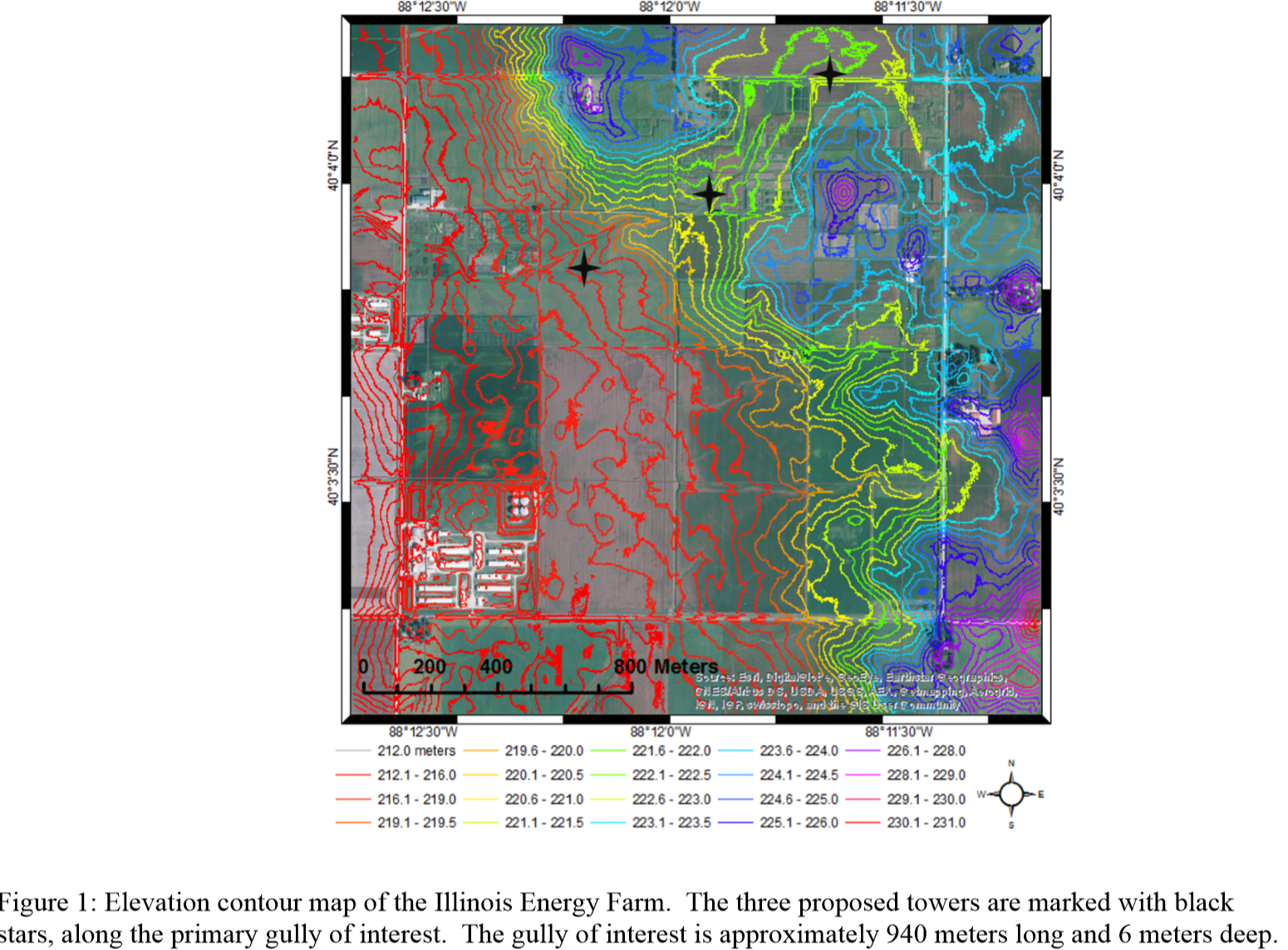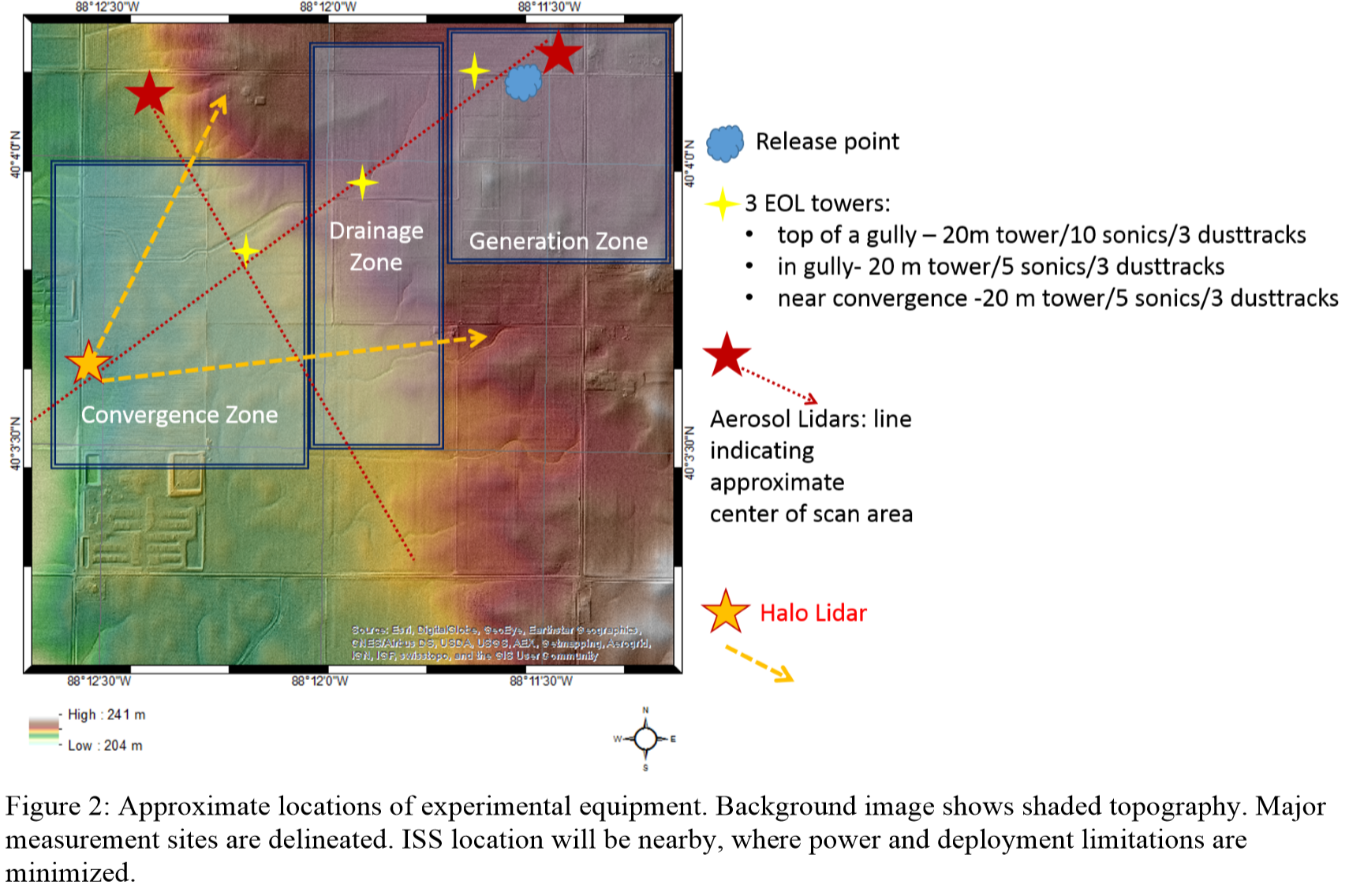SAVANT
Stable Air Variability and Transport
Overview
The Stable Atmospheric Variability and Transport, or SAVANT field project was held near Mahomet, Illinois and ran from 15 September 2018 to 15 November 2018. This project was executed by a team of researchers from the University of South Carolina and the University of Illinois.
Stable surface boundary layers (SBL) occur more than one-half the total time in mid-latitudes, yet our knowledge of the complexity of the near surface drainage and converging flows associated with stable conditions is very limited. Surface emissions produced in stable conditions are difficult to predict and display seemingly erratic high-concentration "clumps" which stay near the ground. These effects are seen in even shallow topographic conditions Some studies have measured converging background and drainage flows in mountain areas, however, few studies have examined this in less dramatic, but more common, topographic areas. In general, transport models and field sampling systems have not been adapted to converging flows. We propose a measurement campaign to address these open issues.
 |
 |
The goal of the proposed work is to quantify, through a field measurement campaign, the effects of converging shallow cold air drainage and background flow on aerosols transport and dispersion to specifically answer the following questions:
- Under what conditions (i.e. cloud cover, threshold wind speed, and stability regime) do converging flows exist?
- What spatial scale of flows are generated by converging drainage and background flows, and do these flows follow the current theories of wind speed dependence?
- How is aerosol dispersion and transport influenced by turbulence forced oscillations generated in response to the collided flow?
- What are the effects of intermittent turbulence on drainage and converging flow spatial and temporal variability of aerosol transport?
The novel aspect of this work is the ability to identify turbulent events and features with aerosol lidars to add the missing spatial component to our current understanding. The field campaign will consist of point and area releases of aerosols measured with two 3-D aerosol lidars, as well as a full characterization of the 3-D wind field and turbulence environment by tower and Doppler lidar observations at the Energy Farm, University of Illinois. Data analysis focusing on the 4 objectives will be conducted using state of the art technologies including methods previously developed by the proposing PIs.
Intellectual Merit
The project will provide new knowledge on drainage and converging flows and their effects on aerosol transport in areas of low topographic variability. Especially of interest is how cloud cover, threshold wind speed, turbulence intermittency, topography, and stability regime affect the flows and aerosol transport. This project will fill the significant gaps in current model parameterizations of the flows and transport in SBLs. It will provide new parameterizations and modifications to extend existing to the SBL theories.
Broader Impacts
The larger benefits to society are to provide parameterization of drainage and converging flows for dispersion and weather forecast models. A rich field data set for other researchers to utilize will also be a direct result. The work will also seek to expand public knowledge in understanding the nature of scientific enquiry with a specific focus on instrumentation. We propose to undertake a educational materials development project to create a series of video modules for use in secondary educational settings and for viewing by the general public.
Principal Investigators
April Hiscox, U South Carolina
Junming Wang, U Illinois UC
David Kristovich, U Illinois UC
Data Manager
EOL Archive, NCAR/EOL/DMS
Contact Webmaster, NCAR/EOL/DMS